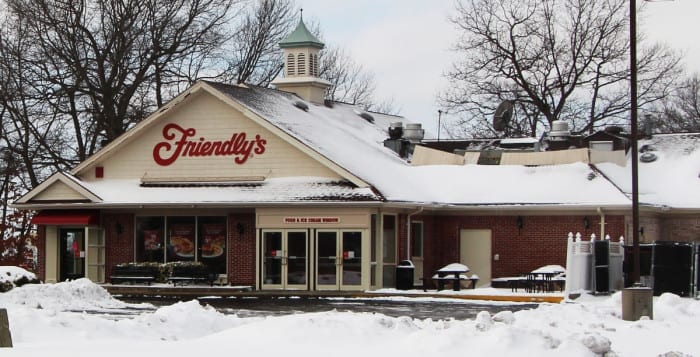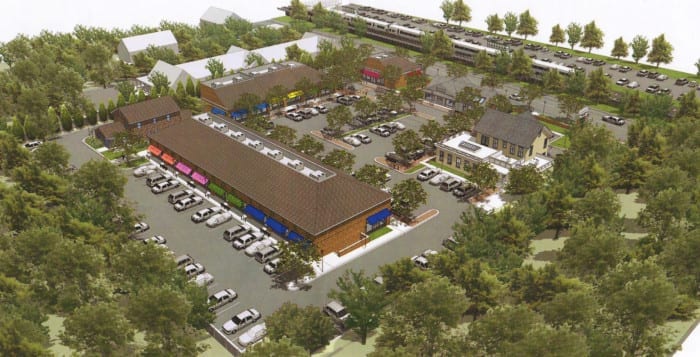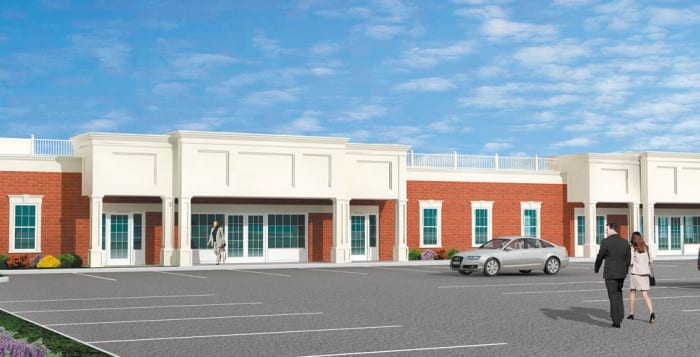The new year brought new ideas to the Three Village area, starting with the new name of the Civic Association of the Setaukets and Stony Brook. But there were more pressing issues facing the civic at its first meeting this year.
The civic officially changed its name to the Three Village Civic Association on Jan. 1 with support from its membership. Shawn Nuzzo, president of the civic association, said the name was a mouthful, but a different kind of mouthful had its eyes set on Stony Brook as well.
Toward the end of last year, the civic met with developers representing the Chick-fil-A restaurant chain, which has proposed building a new location on Hallock Road in Stony Brook where the Friendly’s currently stands. Nuzzo said the company is seeking a zoning change for the area to add a drive-thru to the prospective restaurant.
According to Nuzzo, the 1.3-acre property is too small to accommodate a drive-thru and extra parking — a two-acre property is required for such development.
Despite Chick-fil-A’s popularity, the civic found that residents want less drive-thru style fast-food establishments after conducting a poll regarding commercial development in the area, Nuzzo said.
“You really have to show that there’s a need. … Everybody likes Chick-fil-A. … How necessary is one more Chick-fil-A on the wrong side of the street,” said Robert de Zafra, former president of the civic and Three Village Community Trust secretary.
De Zafra, added that there are more appropriate properties past the Smithtown line for Chick-fil-A’s vision, in his opinion.
Representatives from Chick-fil-A did not respond to requests seeking comment.
The proposal is one of three that sparked concerns among civic members. On Jan. 11, developers Enrico and Danny Scarda from The Crest Group proposed building condominiums near Setauket Meadows. The Scardas said they want to establish a condominium community for residents 55-years-old and older to cater to aging Long Islanders. The woodland area must be rezoned to accommodate the prospective 100-unit plan, however.
The property’s current sewage treatment plant is also an issue, civic members said. The two developers proposed using the property’s current wastewater treatment plant that was established 10 years ago, according to Nuzzo.
“If that treatment plant can’t accommodate expansion or if it’s not performing up to [the] Suffolk County Health code. … There’s no way,” Nuzzo said.
While the town is in charge of zoning changes, Suffolk County is responsible for enforcing a property’s health code. In a letter to the developers, the civic pointed out that there are no shops in walking distance of the property.
Their concerns also included the number of units proposed and plans for affordable housing units on the property. The town requires developers to devote 10 percent of residential units to affordable housing.
Although age-restricted establishments are necessary for Long Island’s increasing elderly community, the civic is one of many organizations that pushed for the revitalization of Route 25A near the Stony Brook train station.
Before the Town of Brookhaven passed a resolution to conduct a study of Main Street from the Smithtown line to Nicolls Road, Parviz Farahzad introduced the idea of a small strip mall called Stony Brook Square on the property across from the train station. The proposal was a work-in-progress as the civic voiced concerns about the mall’s appearance, among other issues. Nuzzo said the corridor study would help “give an idea about the big picture,” for revitalizing the area.
While the proposals are in their infancy stages, de Zafra said the civic would have negative input regarding the Chick-fil-A proposal once it reaches the town. Nuzzo added that looking out for the community is part of the civic’s job.
“A good civic association is meant to counteract and balance [if] a developer has an idea,” Nuzzo said. “It depends if it’s really in the best interest of the community as a whole.”









